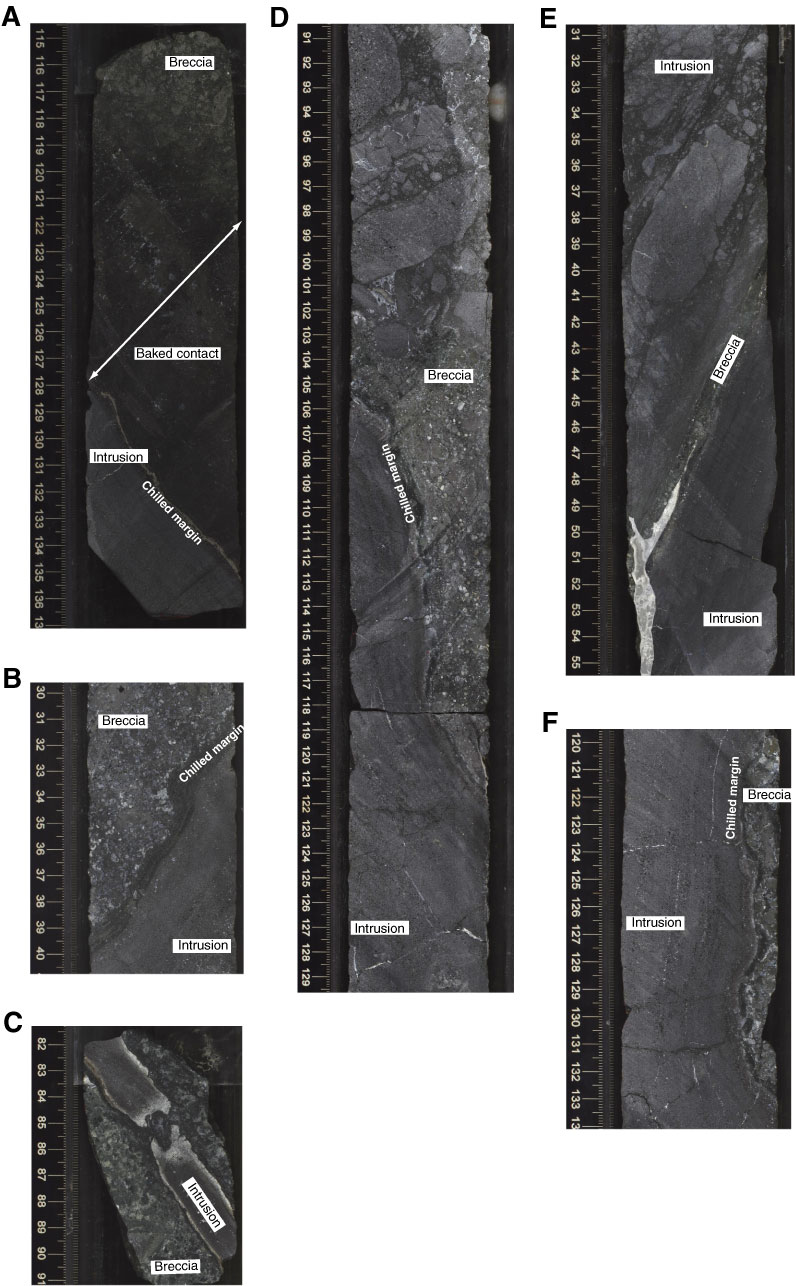
Figure F54. Representative core photographs of contacts between sheet intrusions and country rocks. Interpreted overlays of these images are shown in Figure F55. Note how traces of vesicle bands (dashed black lines in Fig. F55) are parallel to the intrusion margins. A. Moderately dipping upper contact with a ~7 cm wide baked margin (interval 330-U1374A-55R-1A, 114.5–137 cm). B. Moderately dipping contact with much thinner (<1 cm) baked margin (interval 58R-3A, 30–40.7 cm). C. Smallest intrusion recovered (only 2 cm wide) (interval 55R-4A, 81.3–91.2 cm). D. Curved intrusive margin into volcanic breccia (interval 60R-1A, 90.4–129.6 cm). E. Contact between younger massive intrusion (lower right) with older fragmented intrusion (upper left) (interval 68R-5A, 30.6–55.5 cm). Above 25 cm (off image), the older intrusion is unfragmented, and fragmentation becomes progressively more intense toward the contact with the younger intrusion, suggesting this fragmentation is caused by the younger intrusion. Between the two intrusions is a narrow zone of greenish material, which may be “country rock” breccia or highly altered material from the older intrusion. Fluids were mobilized along this zone, as indicated by the ~10 mm wide zeolite vein that runs from 48 to 55.5 cm in this image. This vein becomes ~25 mm wide between 91 and 95 cm (off image), which is the widest vein recorded at Site U1374. F. Near-vertical intrusion margin and vesicle bands (interval 59R-1A, 119.5–134.1 cm).

Previous | Close | Next | Top of page